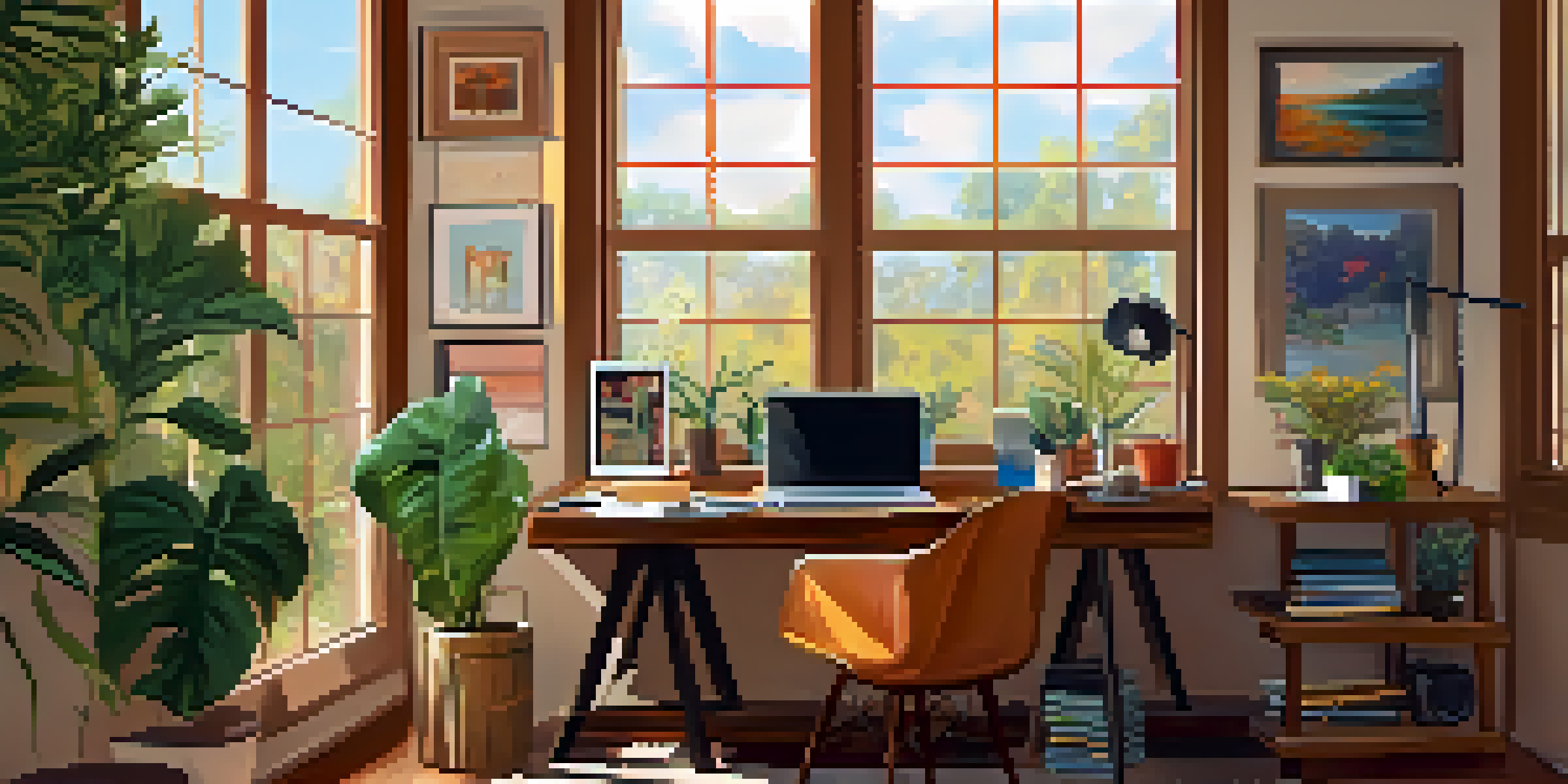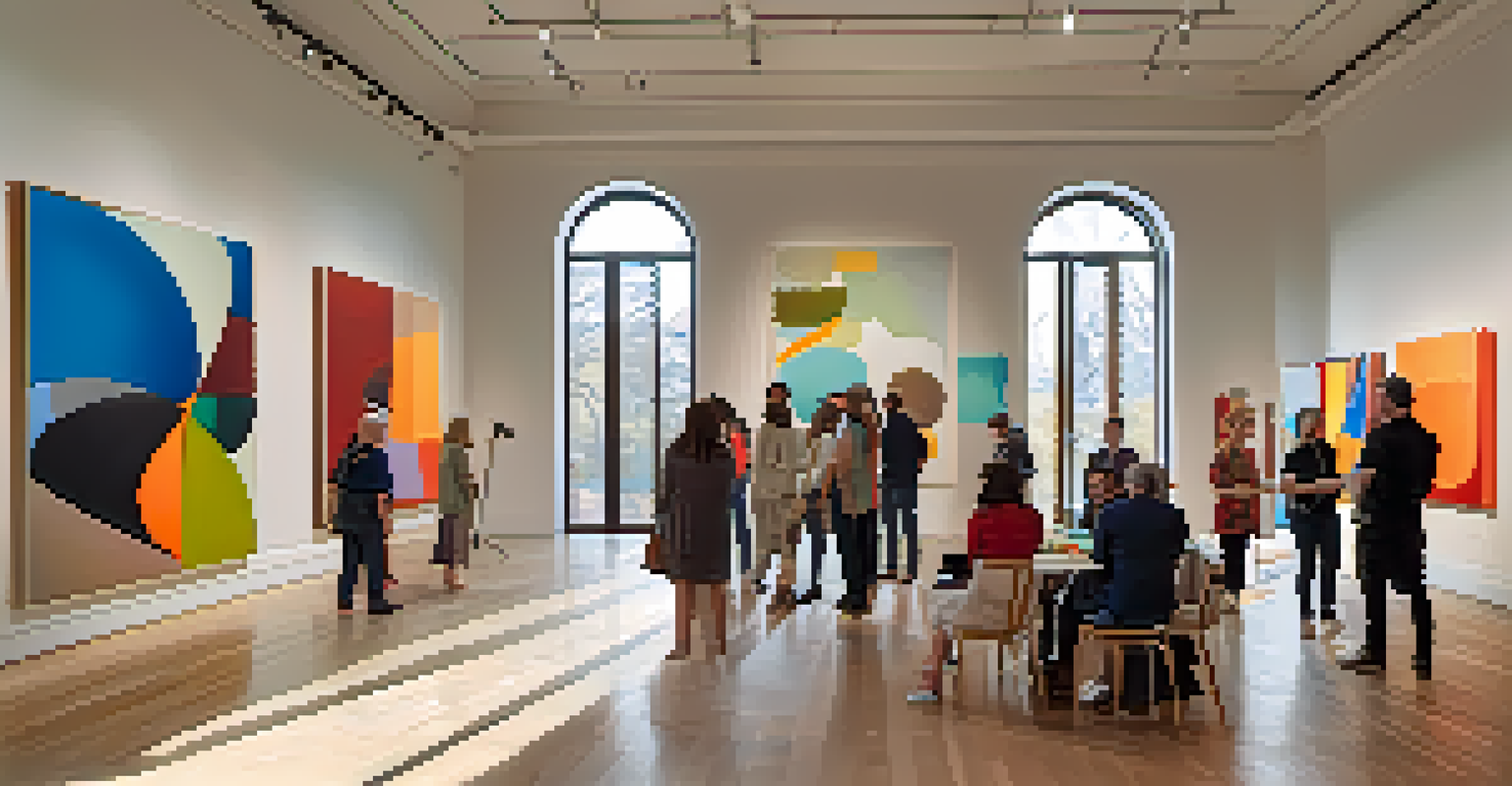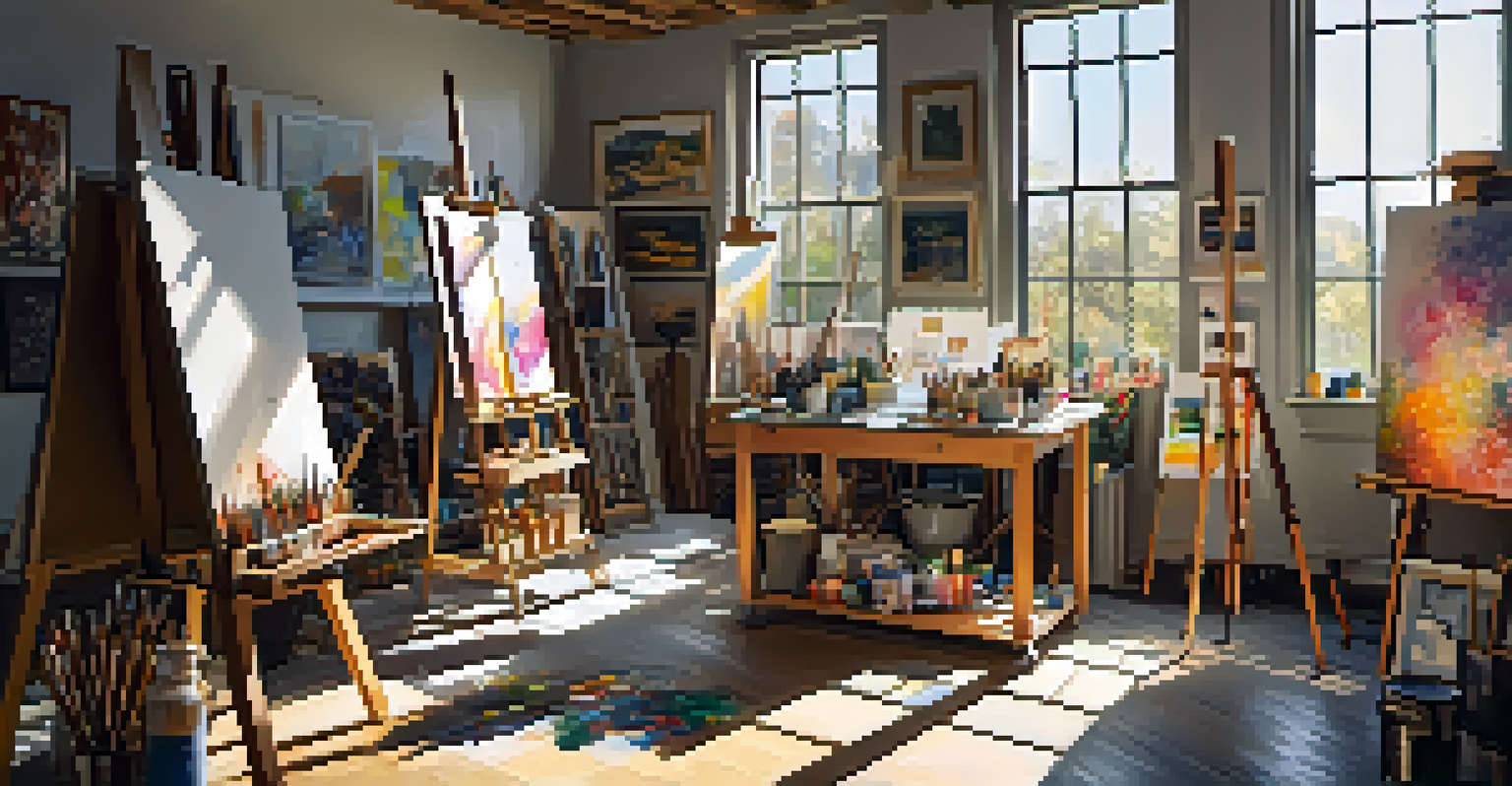Using Blogs to Foster Art Critique and Discussion

Understanding the Role of Blogs in Art Critique
Blogs provide a platform where artists and enthusiasts can share their thoughts and experiences. They serve as a virtual canvas for discussions, allowing for diverse perspectives on art pieces. By inviting commentary, blogs can transform a solitary encounter with art into a collaborative dialogue.
Art is not freedom from discipline, but disciplined freedom.
Moreover, blogs can demystify the critique process. Rather than intimidating, they can make art analysis accessible to everyone, encouraging more voices to join the conversation. This inclusive approach can lead to richer discussions and a deeper appreciation of artistic expression.
Ultimately, blogs offer a unique space for both artists and audiences to engage thoughtfully with art. They break down barriers, allowing individuals from various backgrounds to express their opinions and interpretations, fostering a community of shared insights.
Creating a Blog That Encourages Discussion
To create a blog that truly encourages discussion, it’s essential to establish a welcoming tone. Using conversational language invites readers to feel comfortable sharing their thoughts, making them more likely to engage. Additionally, posing open-ended questions at the end of each post can stimulate further dialogue and invite diverse opinions.

Incorporating multimedia elements, like images and videos, can also enhance engagement. Visuals can evoke emotions and prompt responses, enriching the discussion around the artwork. This combination of text and visuals helps create a dynamic experience that keeps readers coming back for more.
Blogs Transform Art Dialogue
Blogs provide an inclusive platform for diverse perspectives, encouraging collaborative discussions about art.
Lastly, maintaining a consistent posting schedule can help build a loyal audience. When readers know when to expect new content, they're more likely to return and participate in ongoing discussions. Consistency can turn a simple blog into a vibrant hub of artistic dialogue.
Fostering Community Through Guest Contributions
Inviting guest contributors to share their insights can greatly enrich your blog. Artists, critics, and even art students can provide fresh perspectives that reignite discussions. This variety not only keeps the content intriguing but also broadens your blog's reach by tapping into the guest's network.
Every artist was first an amateur.
Feature interviews or collaborative posts that highlight different voices in the art world. These contributions can spark new conversations, as readers may resonate with a guest’s unique viewpoint. The interplay of different opinions creates a multifaceted dialogue that enhances the critique process.
By building a community of contributors, you establish a platform where everyone feels valued. This sense of belonging encourages more active participation from your audience, transforming your blog into a lively forum for art critique and discussion.
Using Social Media to Amplify Blog Discussions
Social media serves as the perfect companion to your blog, amplifying discussions and attracting new readers. Sharing blog posts on platforms like Instagram, Twitter, and Facebook can create buzz and invite commentary. Engaging with followers through comments and direct messages fosters a sense of community around your blog.
Additionally, you can create dedicated hashtags to encourage discussions about specific topics or pieces of art. This way, readers can easily find and contribute to conversations that interest them. It also allows for a broader audience to engage with your content, expanding your reach beyond traditional blog readers.
Guest Contributions Enhance Insights
Inviting guest contributors broadens perspectives and fosters a rich community dialogue around art.
Ultimately, leveraging social media can breathe new life into your blog discussions. It turns passive readers into active participants, creating a vibrant community around art critique and appreciation.
Encouraging Constructive Critique in Comments
One of the key aspects of fostering meaningful discussions is encouraging constructive critique in the comments section. Setting clear guidelines for respectful dialogue can help create a positive atmosphere where diverse opinions are welcomed. This can lead to insightful exchanges that enhance understanding and appreciation of art.
Moderating comments is also crucial in maintaining a constructive environment. Ensure that the conversation remains focused on the art rather than personal attacks or negativity. By actively managing discussions, you promote a culture of respect and open-mindedness.
Highlighting exemplary comments or critiques can further encourage thoughtful engagement. Recognizing valuable contributions not only rewards participants but also sets a standard for the type of discourse you wish to cultivate.
Highlighting Emerging Artists Through Blog Features
Featuring emerging artists in your blog can spark interest and discussion around new talent. By spotlighting their work, you not only provide valuable exposure but also invite readers to engage with fresh perspectives. This encourages a sense of excitement and curiosity within the art community.
Creating dedicated posts that delve into an artist’s process, inspirations, and challenges can further enrich discussions. These insights give readers a deeper understanding of the artwork and can inspire more thoughtful critiques. Highlighting the journey of an artist can resonate with audiences on a personal level, fostering connection.
Social Media Boosts Engagement
Leveraging social media amplifies blog discussions and transforms passive readers into active participants.
Moreover, collaborating with emerging artists for guest posts or interviews can lead to unique content. This collaboration invites readers to explore new ideas and forms of expression, encouraging them to reflect on their own artistic journeys.
The Impact of Art Blogs on Broader Art Conversations
Art blogs have the power to influence broader conversations within the art world. By discussing contemporary issues and trends, they can shape public perception and spark important dialogues. As more voices contribute to these discussions, the landscape of art critique becomes increasingly diverse and inclusive.
Moreover, blogs can serve as an archive of opinions and interpretations over time. This historical record can be invaluable for understanding shifts in artistic trends and societal influences. By maintaining a blog that reflects ongoing conversations, you contribute to the evolution of art discourse.

Ultimately, the impact of art blogs extends beyond individual discussions. They can foster a culture of critique that encourages appreciation, understanding, and collaboration among artists and audiences alike.